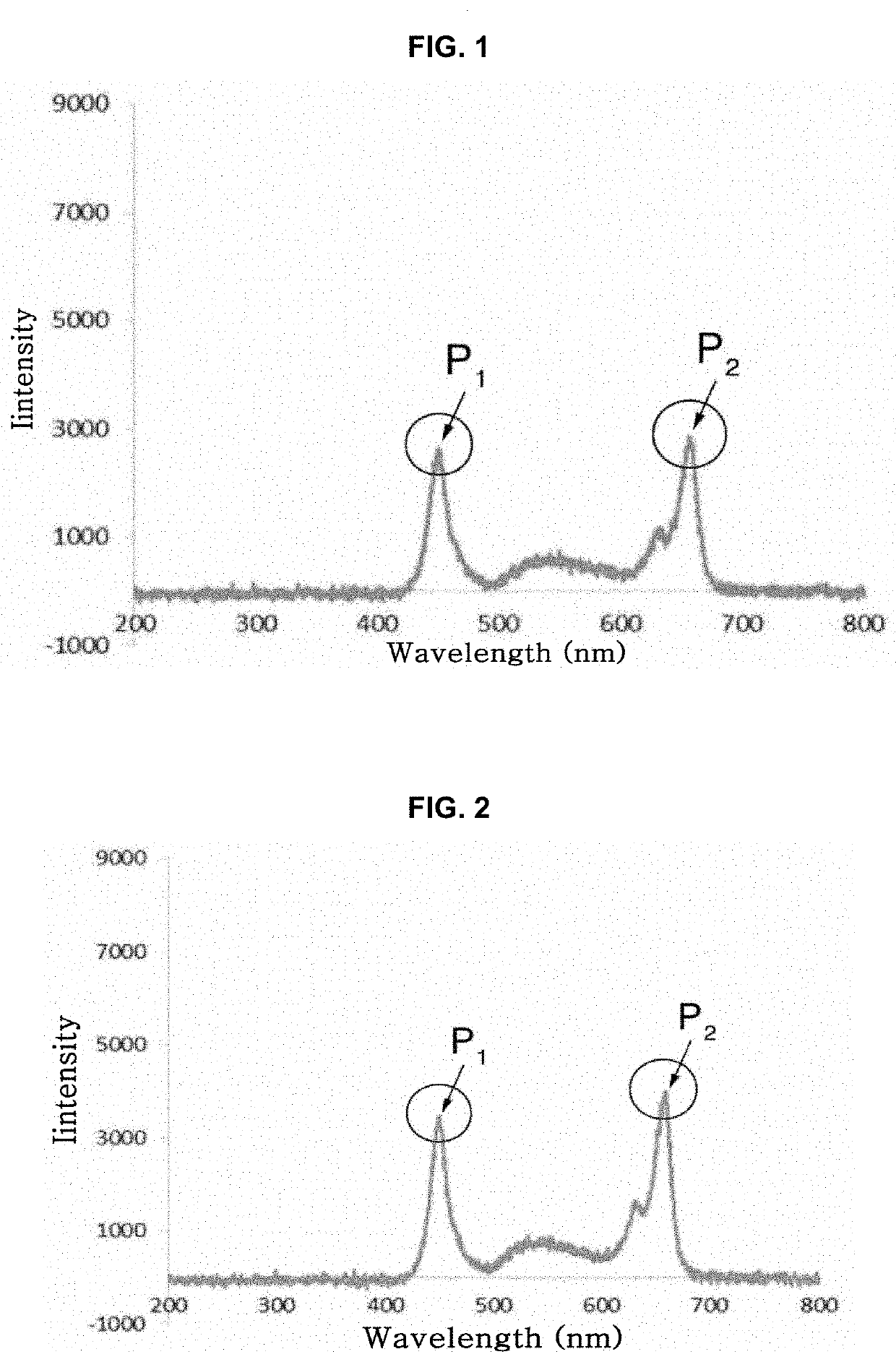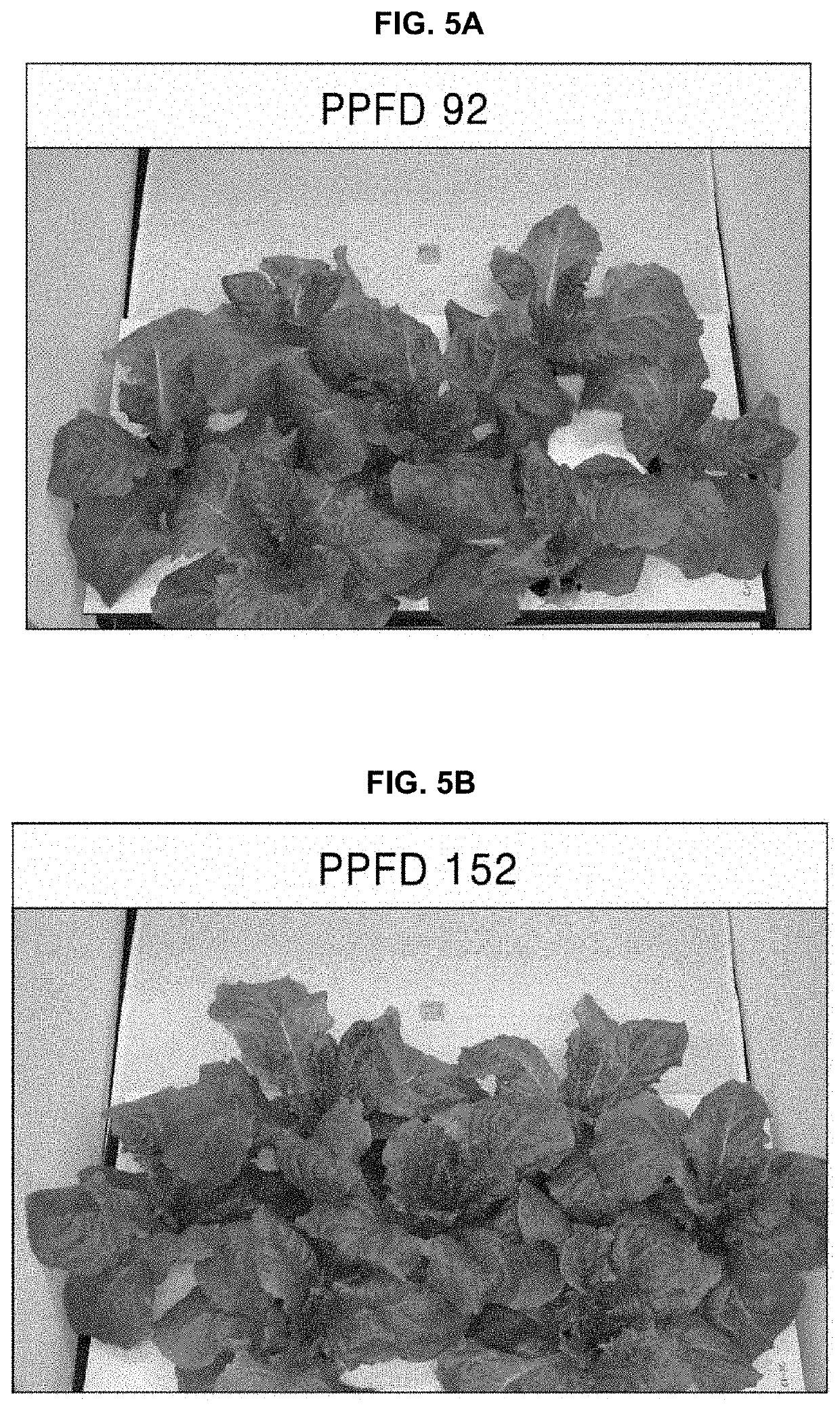Light source for plant cultivation and method for plant cultivation
- Summary
- Abstract
- Description
- Claims
- Application Information
AI Technical Summary
Benefits of technology
Problems solved by technology
Method used
Image
Examples
experiment 1
[0078]Experiment 1 was conducted to determine the growth, phytochemical content, and incidence of tip burn of lettuce depending on intensity of visible light used in lettuce cultivation.
[0079]In Experiment 1, multiple lettuce groups were exposed to light at different intensities during cultivation in the Deep Flow Technique (DFT) hydroponics system. That is, the intensity of visible light used in light treatment for 16 hours per day was set differently for each lettuce group. Each lettuce group consisted of 30 lettuce samples.
[0080]After harvesting the multiple lettuce groups cultivated at different light intensities, a leaf count, a count of tip burn-damaged leaves, fresh weight, chlorophyll content, and phytochemical content were measured for each lettuce group.
[0081]Experimental group 1 was a lettuce group cultivated at a 92 PPFD, Experimental group 2 was a lettuce group cultivated at a 152 PPFD, Experimental group 3 is a lettuce group cultivated at a 198 PPFD, and Experimental g...
experiment 2
[0099]Experiment 2 was conducted to determine effects of use of an auxiliary light source during cultivation on the growth and phytochemical content of lettuce.
[0100]A main light used in Experiment 2 was a light source emitting visible light as main light that illuminates lettuce in a DFT hydroponics system for 16 hours per day. Based on the results of experiment 1, the main light source was set to emit visible light at an intensity determined in consideration of growth of lettuce, the phytochemical content of lettuce, and minimization of incidence of tip burn in lettuce. That is, in Experiment 2, the main light source had a 125 PPFD, which is greater than 92 PPFD and less than 198 PPFD.
[0101]Main light emitted from the main light source has peak wavelengths in the wavelength bands of red light and blue light, respectively. For instance, FIG. 2 provides the details of an optical spectrum of the main light emitted from the main light source as described here.
[0102]The auxiliary light...
experiment 3
[0116]Hydroponics allows a plant to be quickly supplied with nutrients through roots thereof exposed to a nutrient solution. When the plant is also supplied with main light having 198 PPFD or more, the plant can grow at an extremely high rate due to quick supply of nutrients and supply of the main light having high intensity. This results in poor supply of trace elements or other elements necessary for growth, thus causing incidence of tip burn in the plant.
[0117]Sunlight has 198 PPFD or more, and a plant cultivated by hydroponics using sunlight can suffer from tip burn. UV light can act as a stress factor on plants, causing poor growth of the plants.
[0118]Accordingly, for a plant cultivated under irradiation with visible light having 198 PPFD or more, additional UVB irradiation can suppress overgrowth of the plant or incidence of tip burn due to an extremely high growth rate of the plant.
[0119]In Experiment 3, UVB as auxiliary light was additionally supplied to a plant while supply...
PUM
 Login to View More
Login to View More Abstract
Description
Claims
Application Information
 Login to View More
Login to View More - R&D
- Intellectual Property
- Life Sciences
- Materials
- Tech Scout
- Unparalleled Data Quality
- Higher Quality Content
- 60% Fewer Hallucinations
Browse by: Latest US Patents, China's latest patents, Technical Efficacy Thesaurus, Application Domain, Technology Topic, Popular Technical Reports.
© 2025 PatSnap. All rights reserved.Legal|Privacy policy|Modern Slavery Act Transparency Statement|Sitemap|About US| Contact US: help@patsnap.com



